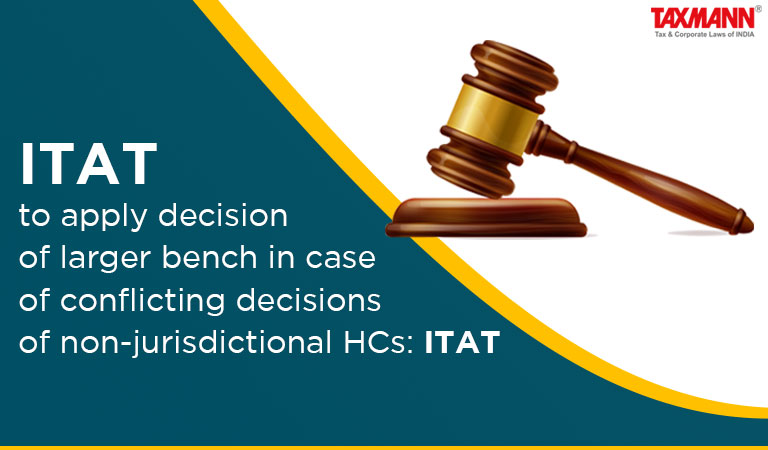ITAT to apply decision of larger bench in case of conflicting decisions of non-jurisdictional HCs: ITAT
- Blog|News|Income Tax|
- 2 Min Read
- By Taxmann
- |
- Last Updated on 3 November, 2022
Case Details: Wockhardt Ltd. v. DCIT - [2022] 144 taxmann.com 27 (Mumbai - Trib.)
Judiciary and Counsel Details
-
- Pramod Kumar, Vice-President & Sandeep S Karhail, Judicial Member
- Ronak Doshi & Jinal Jain for the Appellant.
- Vatsala Jha for the Respondent.
Facts of the Case
The issue before the Mumbai Tribunal was in what manner and to what extent the decisions of Hon’ble non-jurisdictional High Courts bind the lower judicial forums outside of their jurisdiction.
ITAT Held
The Mumbai Tribunal held when there are conflicting decisions of non-jurisdictional High Courts but no decision of jurisdictional HC on an issue, ITAT should not as a rule apply the view favorable to the assessee.
It’s a conscious call that is required to be taken for the question of whether, on the facts of a particular situation, the non-jurisdictional High Court is required to be followed.
For Tribunal, it is a compulsion by law to follow a jurisdictional High Court decision. However, following a non-jurisdictional High Court is a call of judicial propriety. The decisions of the non-jurisdictional High Court are followed in letter and spirit if there is no contrary decision by the jurisdictional High Court.
Difficulties arise when there are conflicting views of the non-jurisdictional High Courts. Tribunal can’t choose the views of one of the High Courts based on its perceptions.
In the given case, there was one decision of the division bench consisting of two Hon’ble judges, and there was another decision of a single judge bench consisting of only one Hon’ble judge.
The Tribunal has much simpler and much more objective criteria readily available, which is the strength of the bench of the Hon’ble non-jurisdictional High Court which has rendered the judgment.
The plurality in the decision-making process makes the decisions of benches with a larger number of Hon’ble judges being placed on a higher pedestal than the decisions of the benches with a lesser number of Hon’ble judges.
Between a division bench decision of a non-jurisdictional High Court and a single judge bench of a non-jurisdictional High Court, a simple objective criterion of choice is the division bench decision to be preferred over the single judge bench decision.
Disclaimer: The content/information published on the website is only for general information of the user and shall not be construed as legal advice. While the Taxmann has exercised reasonable efforts to ensure the veracity of information/content published, Taxmann shall be under no liability in any manner whatsoever for incorrect information, if any.

Taxmann Publications has a dedicated in-house Research & Editorial Team. This team consists of a team of Chartered Accountants, Company Secretaries, and Lawyers. This team works under the guidance and supervision of editor-in-chief Mr Rakesh Bhargava.
The Research and Editorial Team is responsible for developing reliable and accurate content for the readers. The team follows the six-sigma approach to achieve the benchmark of zero error in its publications and research platforms. The team ensures that the following publication guidelines are thoroughly followed while developing the content:
- The statutory material is obtained only from the authorized and reliable sources
- All the latest developments in the judicial and legislative fields are covered
- Prepare the analytical write-ups on current, controversial, and important issues to help the readers to understand the concept and its implications
- Every content published by Taxmann is complete, accurate and lucid
- All evidence-based statements are supported with proper reference to Section, Circular No., Notification No. or citations
- The golden rules of grammar, style and consistency are thoroughly followed
- Font and size that’s easy to read and remain consistent across all imprint and digital publications are applied






 CA | CS | CMA
CA | CS | CMA


